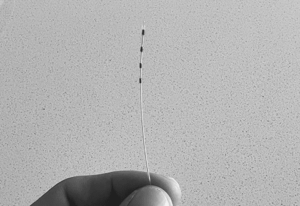Living with chronic pain can be a constant battle, impacting our daily lives and overall well-being. Fortunately, advancements in medical technology continue to offer innovative solutions for pain relief.
Understanding Radiofrequency Ablation
Radiofrequency ablation, also known as radiofrequency neurotomy or rhizotomy, is a minimally invasive procedure that targets and disrupts the nerve signals responsible for transmitting pain. Dr. Tolga Suvar explains that during RFA, high-frequency electrical currents are delivered to the affected nerves, creating heat and effectively ablating them, thus reducing or eliminating pain signals.
How Radiofrequency Ablation Works
The procedure begins with the application of a local anesthetic to ensure the patient’s comfort. Using fluoroscopic guidance, a specialized needle or cannula is precisely inserted near the targeted nerves. Once in position, radiofrequency energy is delivered through the needle, heating the surrounding tissue and disrupting the transmission of pain signals. The entire process is guided by real-time imaging to ensure accuracy and safety.
Conditions Suitable for Radiofrequency Ablation
Dr. Suvar highlights that radiofrequency ablation is commonly used to treat various chronic pain conditions, including but not limited to:
- Facet joint pain: RFA is often employed to address pain originating from the small joints of the spine, known as facet joints.
- Sacroiliac joint pain: The sacroiliac joints, located at the base of the spine, can be a source of chronic pain, and RFA can provide long-lasting relief in such cases.
- Peripheral nerve pain: RFA can also be utilized to target specific peripheral nerves that may be causing chronic pain, such as the occipital nerves or intercostal nerves.
Benefits of Radiofrequency Ablation:
- Prolonged pain relief: Radiofrequency ablation offers the potential for long-lasting pain relief, ranging from several months to years, depending on the individual.
- Minimally invasive procedure: Compared to more invasive surgical options, RFA is a minimally invasive procedure that involves minimal downtime and reduced risk of complications.
- Targeted pain relief: RFA precisely targets the specific nerves responsible for transmitting pain, providing targeted relief without affecting the surrounding healthy tissue.
- Improved quality of life: By reducing or eliminating chronic pain, RFA can significantly improve an individual’s quality of life, allowing them to engage in activities they may have previously avoided.
Radiofrequency ablation has emerged as a game-changer in the field of pain management, offering effective and long-lasting relief for individuals suffering from chronic pain conditions. Thanks to the expertise of pain specialist Dr. Tolga Suvar, we have gained valuable insights into the benefits and potential of this innovative technique. If you are struggling with chronic pain, it is essential to consult with a qualified healthcare professional who can assess your condition and determine if radiofrequency ablation is a suitable option for you. Embrace the possibilities that this procedure holds, and take a step towards a life with reduced pain and improved overall well-being.


